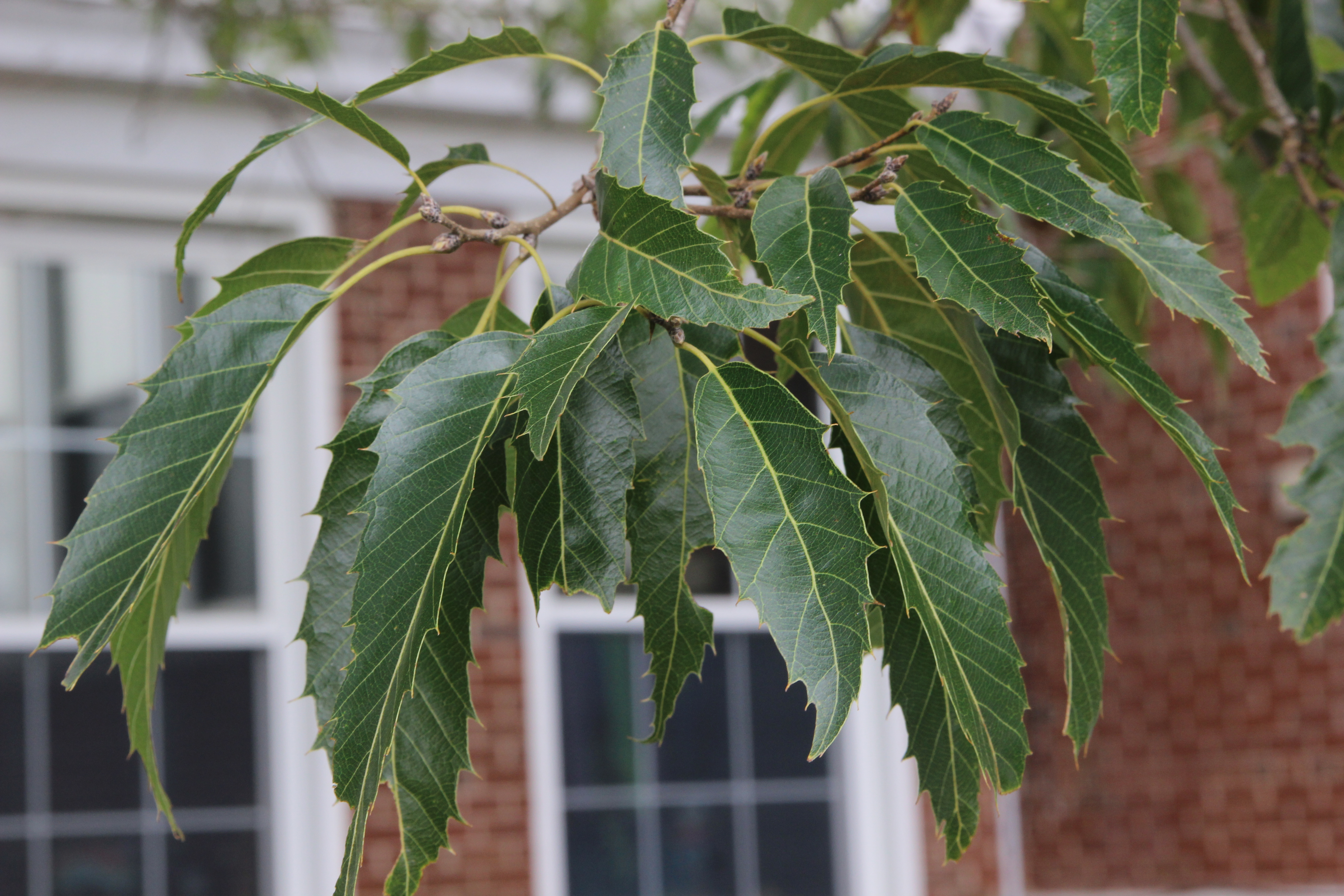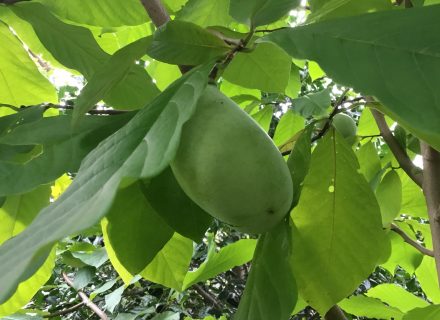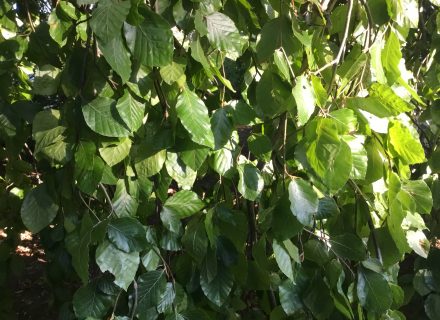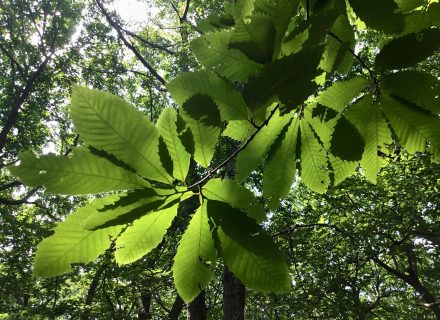Latin Name: Quercus acutissima
Location: A splendid saw tooth oak at the school honors Shelter Island Educational Foundation founding trustee Harman Hawkins.
Tree stats: Native to Japan, Korea, China, and the Himalayas, sawtooth oak get its common name from its long, serrated leaves. Though deciduous, tattered leaves may linger on the tree during the winter. It can grow 40 to 60 feet high and wide and thrives throughout much of America. In the fall it produces an acorn encased in a cap covered with prominent scales.
Asian history: In Japan, sawtooth oak is a host plant for the Japanese oak silkworm (Antheraea yamamai) known as tensan. Japan has a centuries long history of sericulture that is still practiced in outdoor and interior areas. Though rare today, tensan silk is valued for its strength and flexibility. You can see the large, bright green caterpillars in action on various YouTube videos. The moth they turn into is light brown with an impressive wingspan.
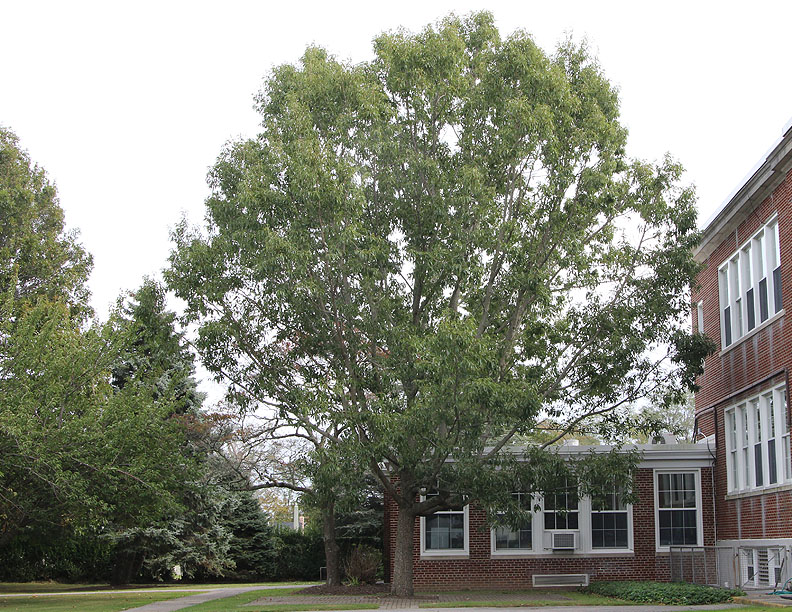
A sawtooth oak at the school
Oh, deer: Introduced to America in 1862, sawtooth oak has for decades been favored by hunters as a wildlife attractant due to its fast growth and ability to produce acorns at a much earlier age than native oaks (5 years versus 15-20 years). As the tree matures, it can yield up to 1,300 pounds of nuts per tree. (One site refers to the sawtooth oak as “deer candy.”) In the 1980s, a cultivar with smaller acorns, called “Gobbler,” was introduced to tempt wild turkeys.
Oh, dear: Some studies have indicated that sawtooth oak acorns are not as nutritious as those of native oaks. More problematic is the tree’s capability for extending its range into woods and forests. In some Midwestern and Eastern states sawtooth oak is now considered a noxious weed and is no longer recommended for planting. Unfortunately, that hasn’t stopped nurseries from continuing to offer it. The school tree, isolated by lawns and roads, is not a threat and should be enjoyed for its stately beauty.
Photos: Tim Purtell

